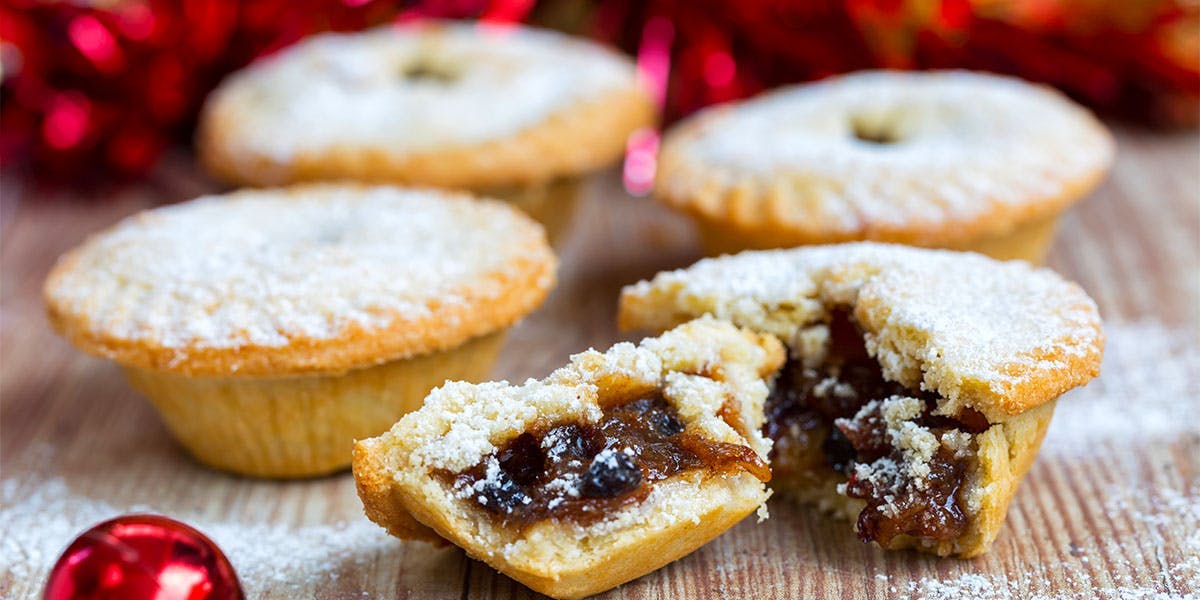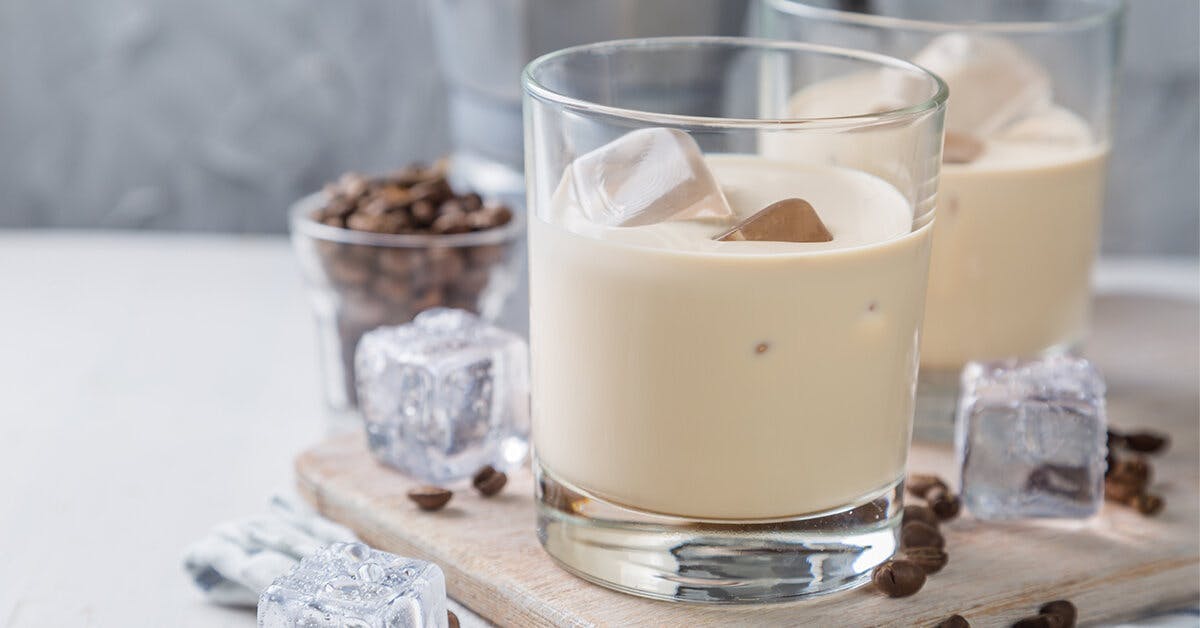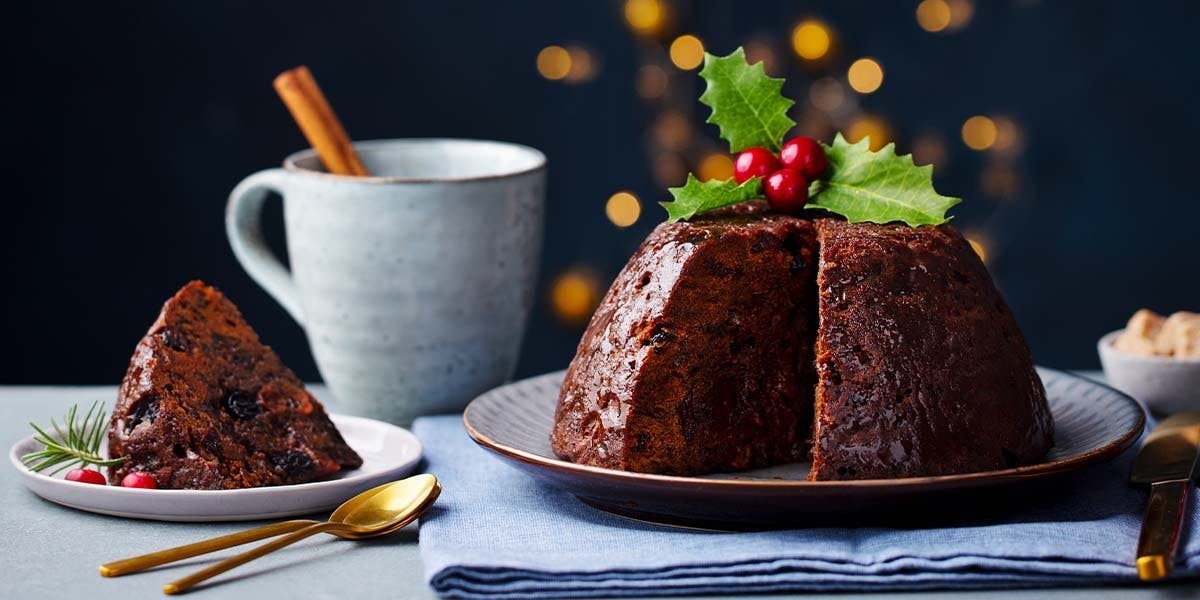Total flexibility, no commitment
A world of unique, crafted gins
Easy, free and reliable delivery
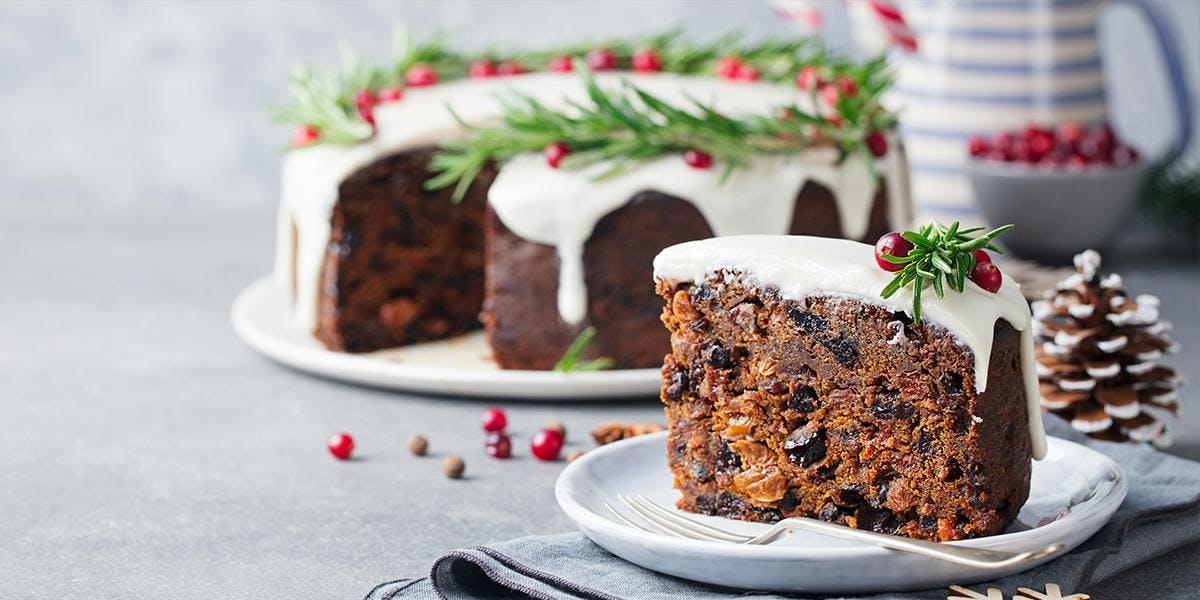
Try this sloe gin-infused Christmas cake for a tasty twist on the classic recipe!
It’s beginning to look like Christmas! Well, okay, it’s still quite a way off but we all need something to look forward to this year, right?! Here at Craft Gin Club, we couldn’t be more excited, and one of the things we love most about this time of year is transforming traditional festive cocktails and food so that they showcase our favourite tipple of all: gin!
With this in mind, we’ve taken the classic Christmas cake recipe by national treasure and queen of home cooks, Mary Berry, and tweaked it ever so slightly by infusing it with our favourite Christmas tipple (sorry, Mary!) for a subtle-but-delicious new take on the most important pudding of the year!
If you’re wondering when the best time is to make your Christmas cake, the answer is, well, now! These dense, fruity cakes really benefit from sitting for up to two or even three months before the big day, especially if you can remember to ‘feed’ them with a spoon of additional alcohol every fortnight. (Just make sure you’re keeping it in a really airtight tin to stop it going stale, of course.)
By the time it comes to cut into a slice, you’ll end up with a wonderfully moist, rich and deeply flavoursome cake. A very merry gin-mas indeed!
You can buy a bottle of beautiful sloe gin right here. This recipe only calls for a little, relatively speaking, so there is plenty in the bottle left for, um, chef’s perks! And if you’re in need of some gin-spiration of what cocktails to make with your sloe gin, be sure to check out the 10 best sloe gin cocktail recipes.
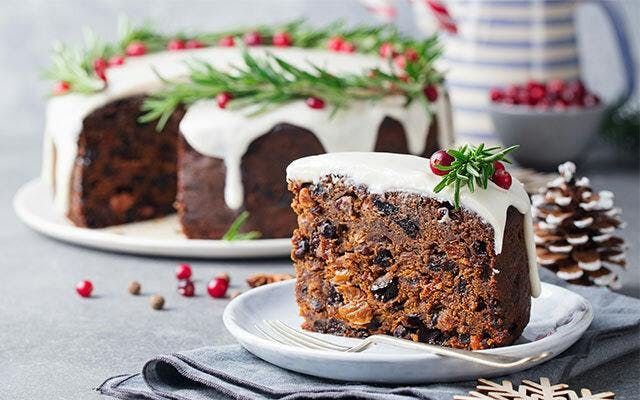
Sloe Gin Christmas Cake
Ingredients:
For the cake
175g raisins
350g natural glacé cherries, halved, rinsed, and thoroughly dried
500g currants
350g sultanas
150ml sloe gin, plus extra for feeding
Zest of 2 oranges
250g butter, softened
250g muscovado sugar
4 large free-range eggs, at room temperature
1 tbsp black treacle
75g blanched almonds, chopped
275g plain flour
1½ tsp mixed spice
For the covering
about 3 tbsp apricot jam, warmed and sieved
icing sugar
675g marzipan
For the royal icing
3 free-range eggs, whites only
675g icing sugar, sifted
3 tsp lemon juice
1½ tsp glycerine
Method:
- For the cake, place all the dried fruit, including the cherries, into a large mixing bowl, pour over the sloe gin and stir in the orange zest. Cover with clingfilm and leave to soak for three days, stirring daily.
- Grease and line a 23cm/9in deep, round tin with a double layer of greased greaseproof paper. Preheat the oven to 140C/120C Fan/Gas 1.
- Measure the butter, sugar, eggs, treacle and almonds into a very large bowl and beat well (preferably with an electric free-standing mixer). Add the flour and ground spice and mix thoroughly until blended. Stir in the soaked fruit. Spoon into the prepared cake tin and level the surface.
- Bake in the centre of the preheated oven for about 4-4½ hours, or until the cake feels firm to the touch and is a rich golden brown. Check after two hours, and if the cake is a perfect colour, cover with foil. A skewer inserted into the centre of the cake should come out clean. Leave the cake to cool in the tin.
- When cool, pierce the cake at intervals with a fine skewer and feed with a little extra sloe gin. Wrap the completely cold cake in a double layer of greaseproof paper and again in foil and store in a cool place for up to three months, feeding at intervals with more sloe gin. (Don’t remove the lining paper when storing as this helps to keep the cake moist.)
- The week before you want to serve, begin covering the cake.
- For the covering, stand the cake upside down, flat side uppermost, on a cake board which is 5cm/2in larger than the size of the cake.
- Brush the sides and the top of the cake with the warm apricot jam.
- Liberally dust a work surface with icing sugar and then roll out the marzipan to about 5cm/2in larger than the surface of the cake. Keep moving the marzipan as you roll, checking that it is not sticking to the work surface. Dust the work surface with more icing sugar as necessary.
- Carefully lift the marzipan over the cake using a rolling pin. Gently level and smooth the top of the paste with the rolling pin, then ease the marzipan down the sides of the cake, smoothing it at the same time. If you are careful, you should be able to cover the cake with no excess marzipan to trim but, if necessary, neatly trim excess marzipan from the base of the cake with a small sharp knife. Cover the cake loosely with baking parchment and leave for a few days to dry out before adding the royal icing.
- For the royal icing, whisk the egg whites in a large bowl until they become frothy. Mix in the sifted icing sugar a tablespoonful at a time. You can do this with a hand-held electric whisk, but keep the speed low.
- Stir in the lemon juice and glycerine and beat the icing until it is very stiff and white and stands up in peaks.
- Cover the surface of the icing tightly with clingfilm and keep in a cool place until needed.
- To ice the cake, place all the icing onto the top of the cake. Spread evenly over the top and sides of the cake with a palette knife. For a snow-peak effect, use a smaller palette knife to rough up the icing.
- Leave the cake loosely covered overnight for the icing to harden a little, then wrap or store in an airtight container in a cool place until needed.
For the cake, place all the dried fruit, including the cherries, into a large mixing bowl, pour over the sloe gin and stir in the orange zest. Cover with clingfilm and leave to soak for three days, stirring daily.
Grease and line a 23cm/9in deep, round tin with a double layer of greased greaseproof paper. Preheat the oven to 140C/120C Fan/Gas 1.
Measure the butter, sugar, eggs, treacle and almonds into a very large bowl and beat well (preferably with an electric free-standing mixer). Add the flour and ground spice and mix thoroughly until blended. Stir in the soaked fruit. Spoon into the prepared cake tin and level the surface.
Bake in the centre of the preheated oven for about 4-4½ hours, or until the cake feels firm to the touch and is a rich golden brown. Check after two hours, and if the cake is a perfect colour, cover with foil. A skewer inserted into the centre of the cake should come out clean. Leave the cake to cool in the tin.
When cool, pierce the cake at intervals with a fine skewer and feed with a little extra sloe gin. Wrap the completely cold cake in a double layer of greaseproof paper and again in foil and store in a cool place for up to three months, feeding at intervals with more sloe gin. (Don’t remove the lining paper when storing as this helps to keep the cake moist.)
The week before you want to serve, begin covering the cake.
For the covering, stand the cake upside down, flat side uppermost, on a cake board which is 5cm/2in larger than the size of the cake.
Brush the sides and the top of the cake with the warm apricot jam.
Liberally dust a work surface with icing sugar and then roll out the marzipan to about 5cm/2in larger than the surface of the cake. Keep moving the marzipan as you roll, checking that it is not sticking to the work surface. Dust the work surface with more icing sugar as necessary.
Carefully lift the marzipan over the cake using a rolling pin. Gently level and smooth the top of the paste with the rolling pin, then ease the marzipan down the sides of the cake, smoothing it at the same time. If you are careful, you should be able to cover the cake with no excess marzipan to trim but, if necessary, neatly trim excess marzipan from the base of the cake with a small sharp knife. Cover the cake loosely with baking parchment and leave for a few days to dry out before adding the royal icing.
For the royal icing, whisk the egg whites in a large bowl until they become frothy. Mix in the sifted icing sugar a tablespoonful at a time. You can do this with a hand-held electric whisk, but keep the speed low.
Stir in the lemon juice and glycerine and beat the icing until it is very stiff and white and stands up in peaks.
Cover the surface of the icing tightly with clingfilm and keep in a cool place until needed.
To ice the cake, place all the icing onto the top of the cake. Spread evenly over the top and sides of the cake with a palette knife. For a snow-peak effect, use a smaller palette knife to rough up the icing.
Leave the cake loosely covered overnight for the icing to harden a little, then wrap or store in an airtight container in a cool place until needed.
Recipe sourced and adapted from the Mary Berry’s Classic Christmas Cake Recipe on BBC.co.uk.
